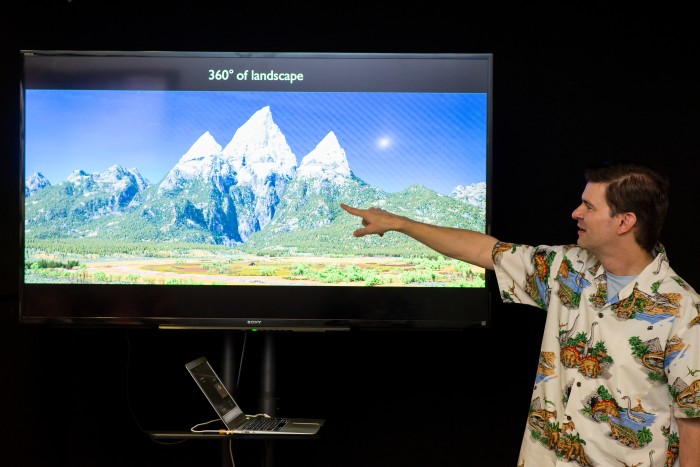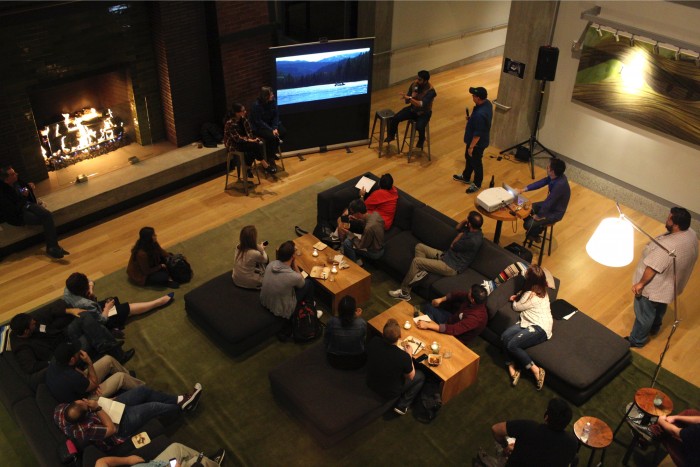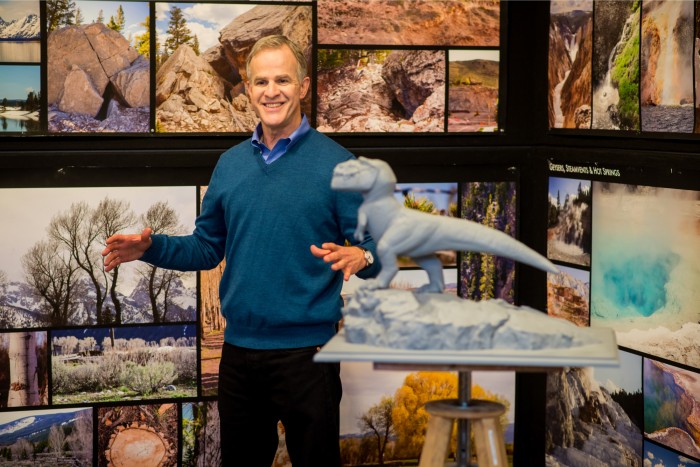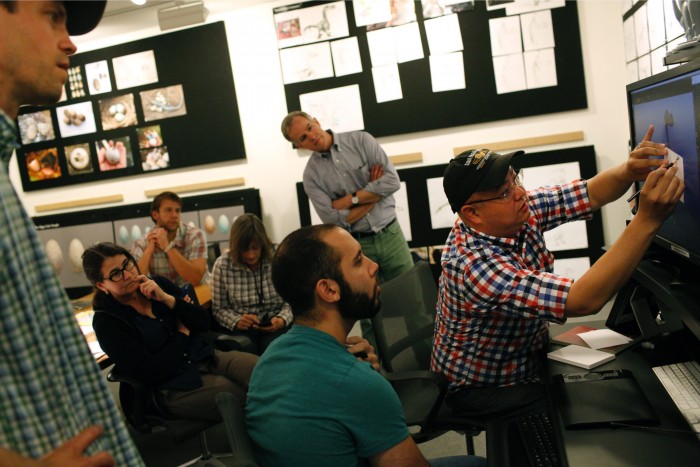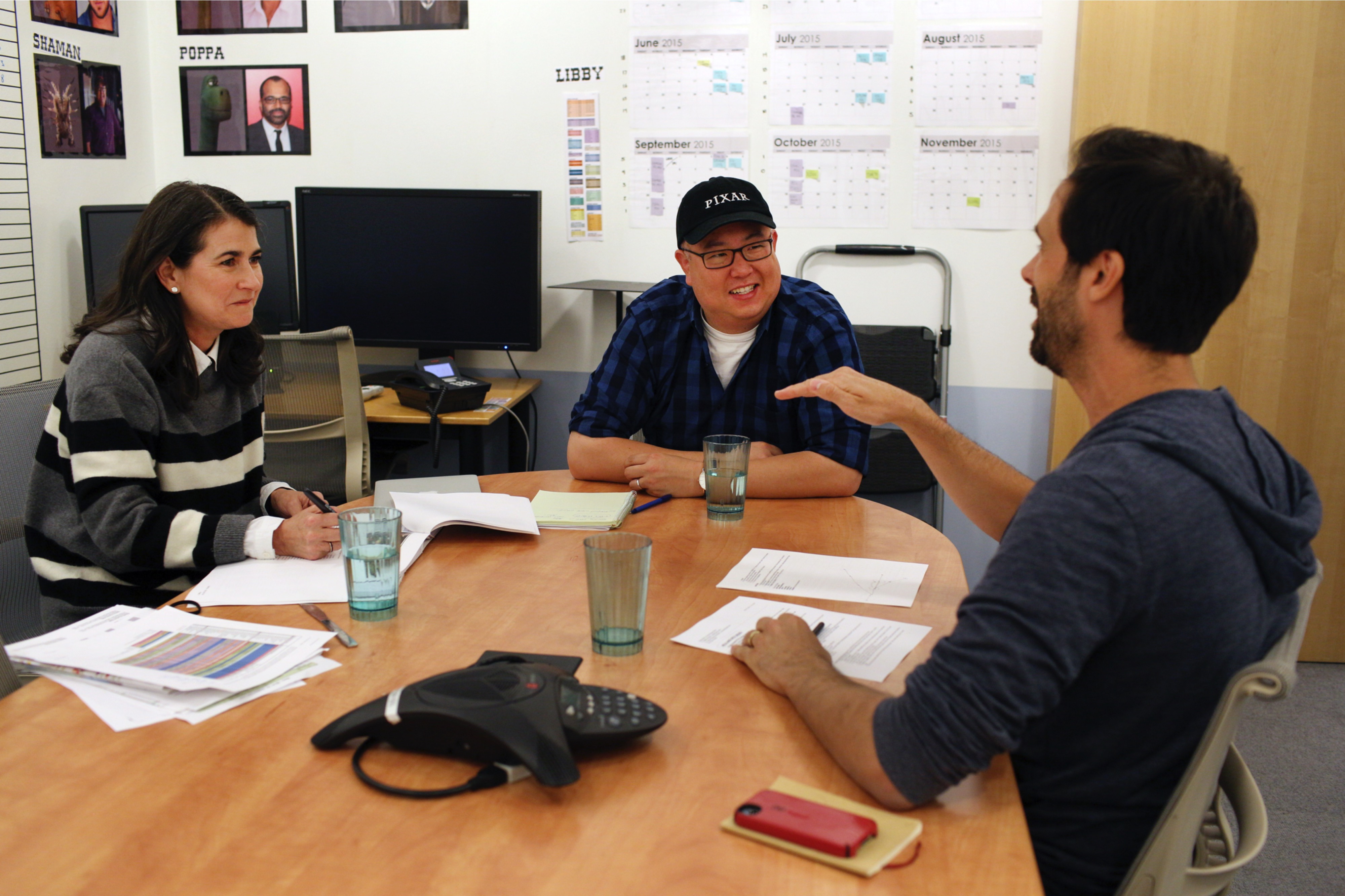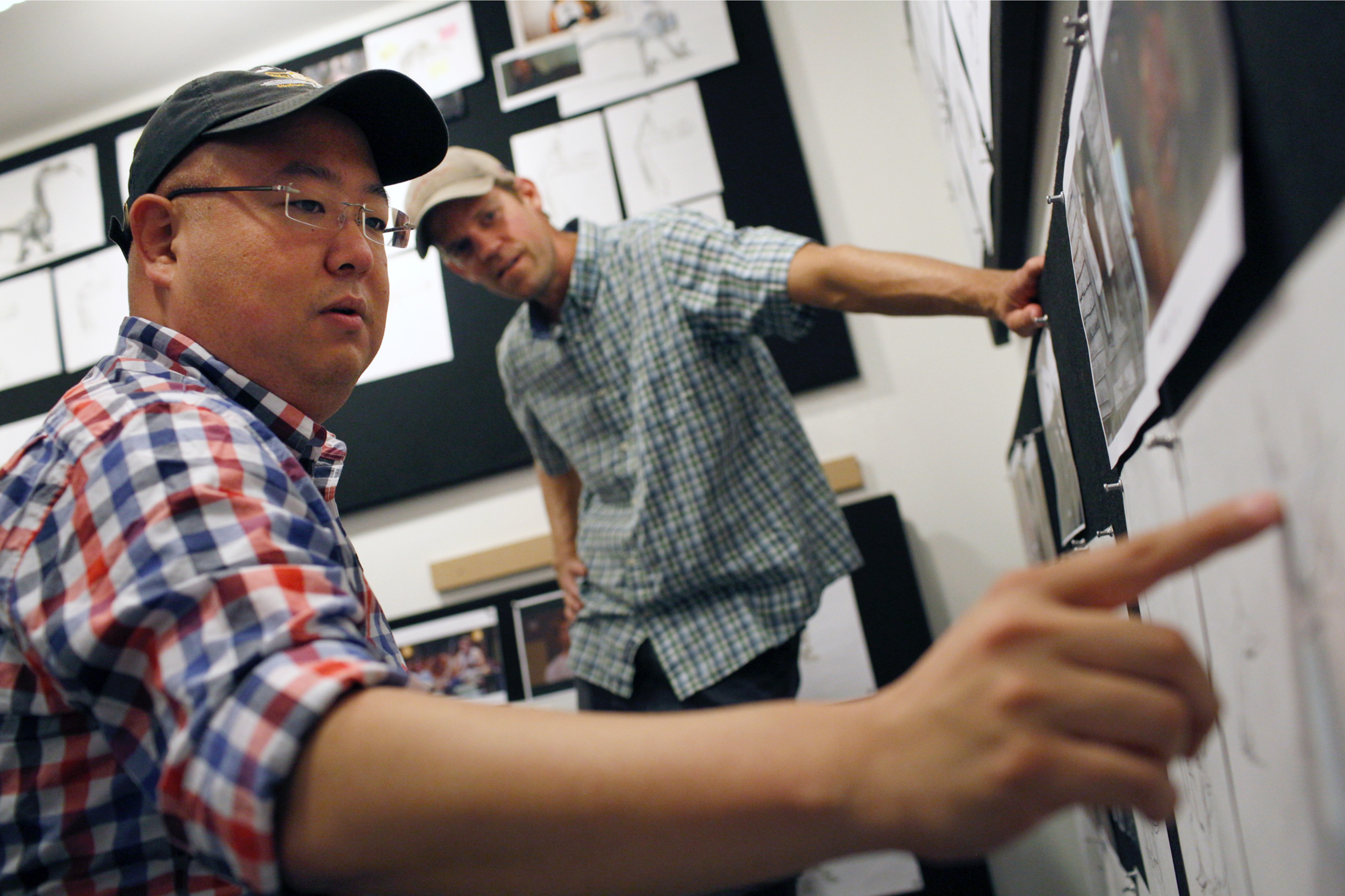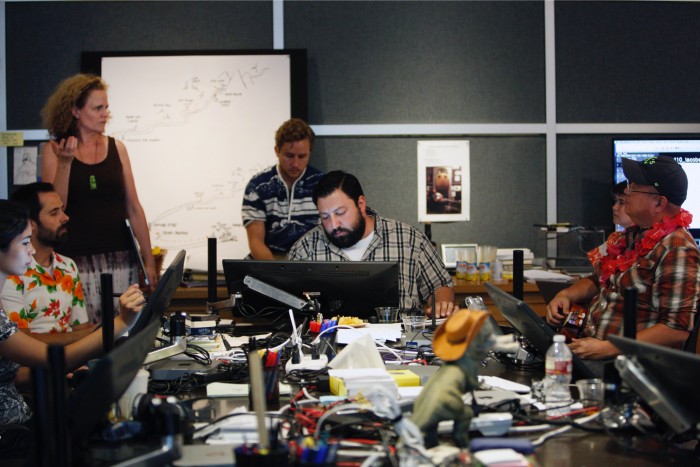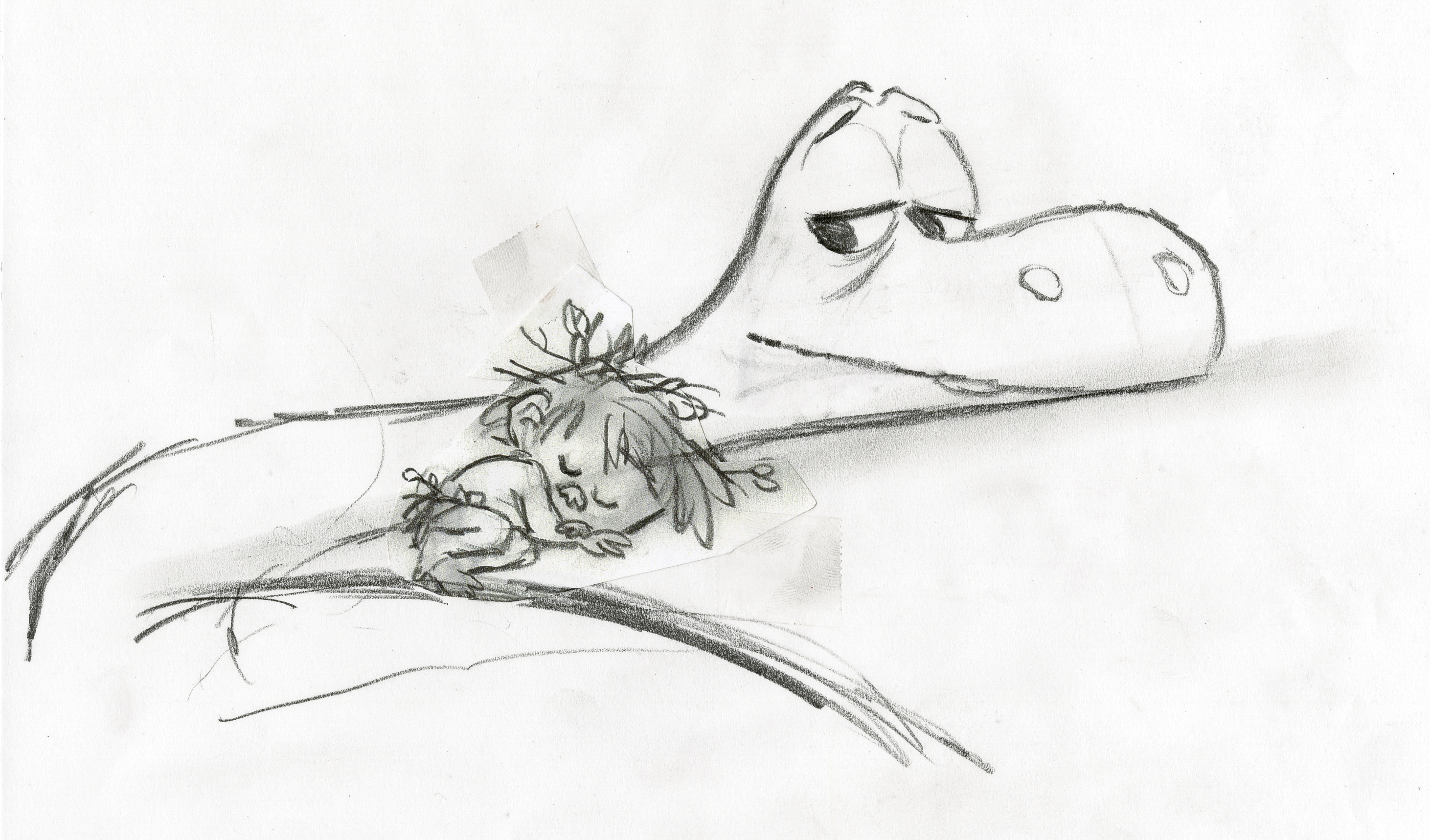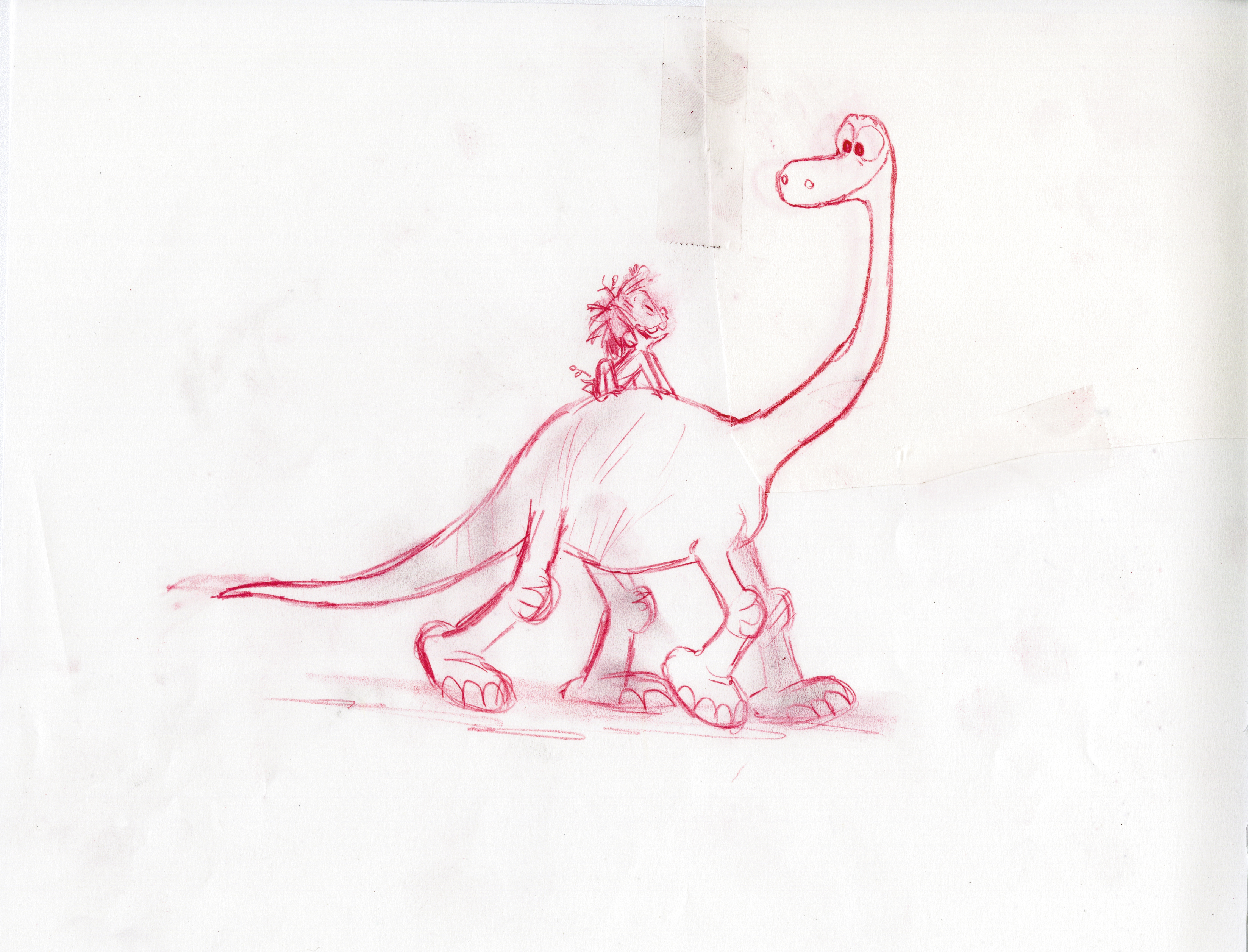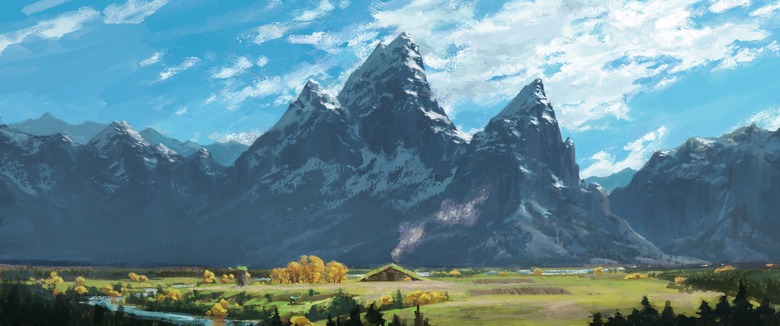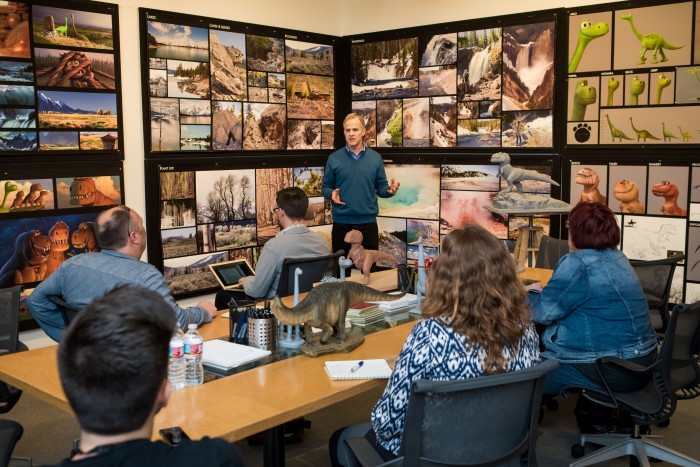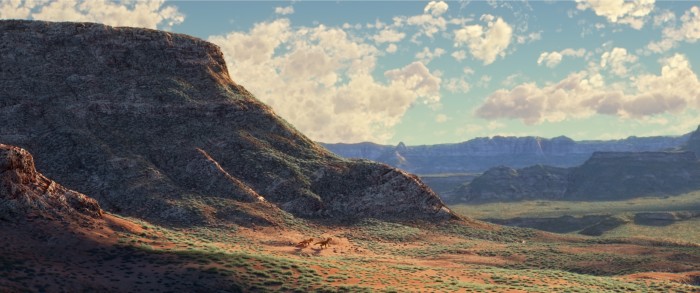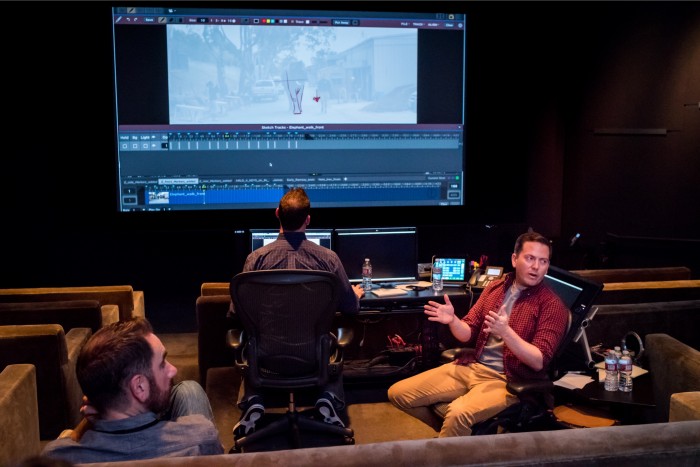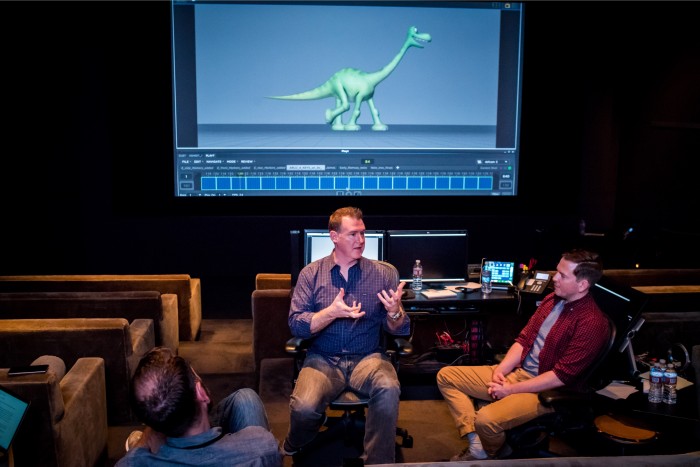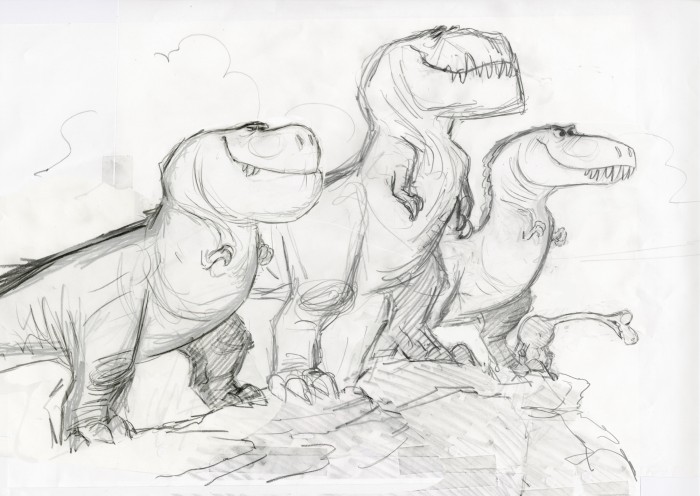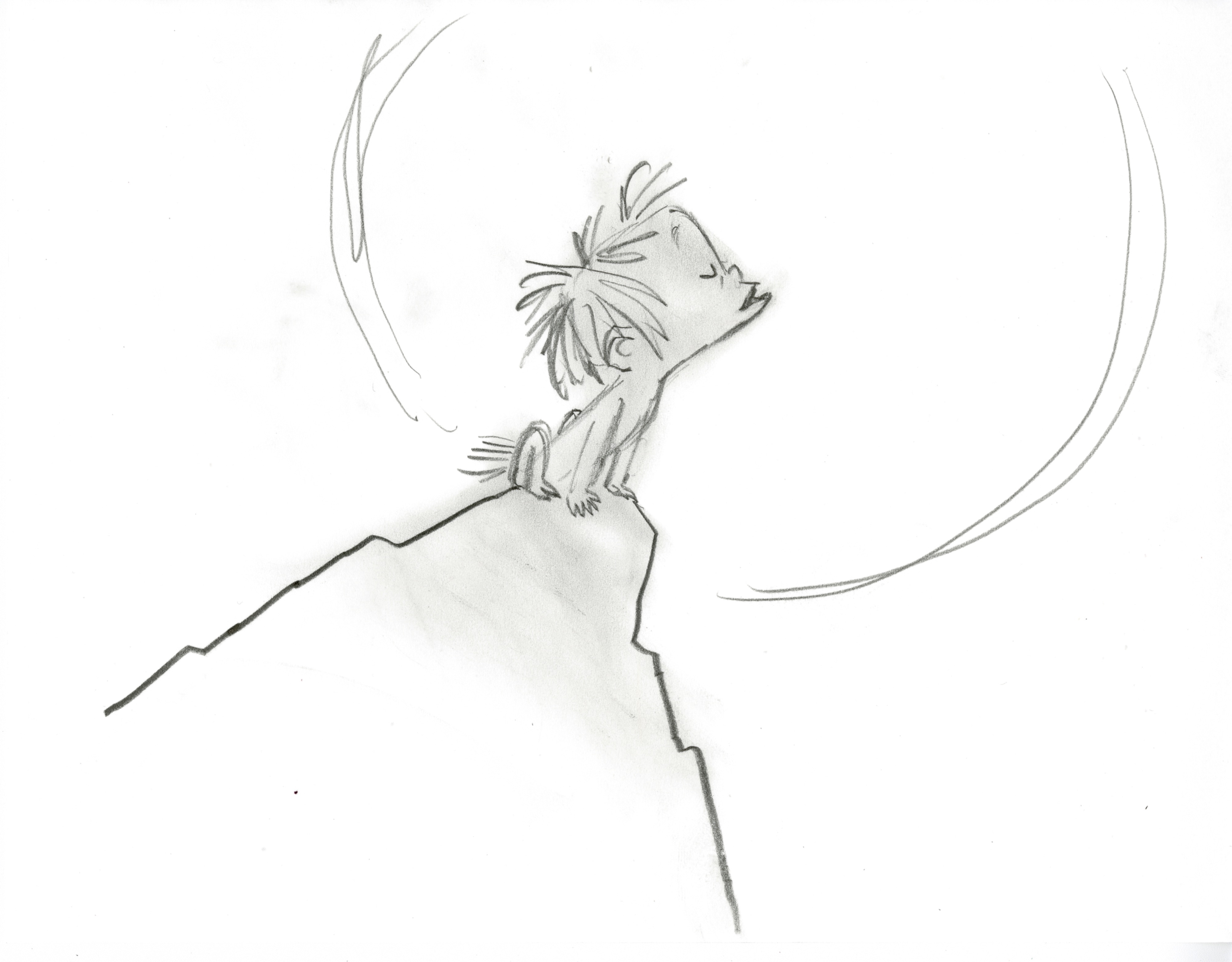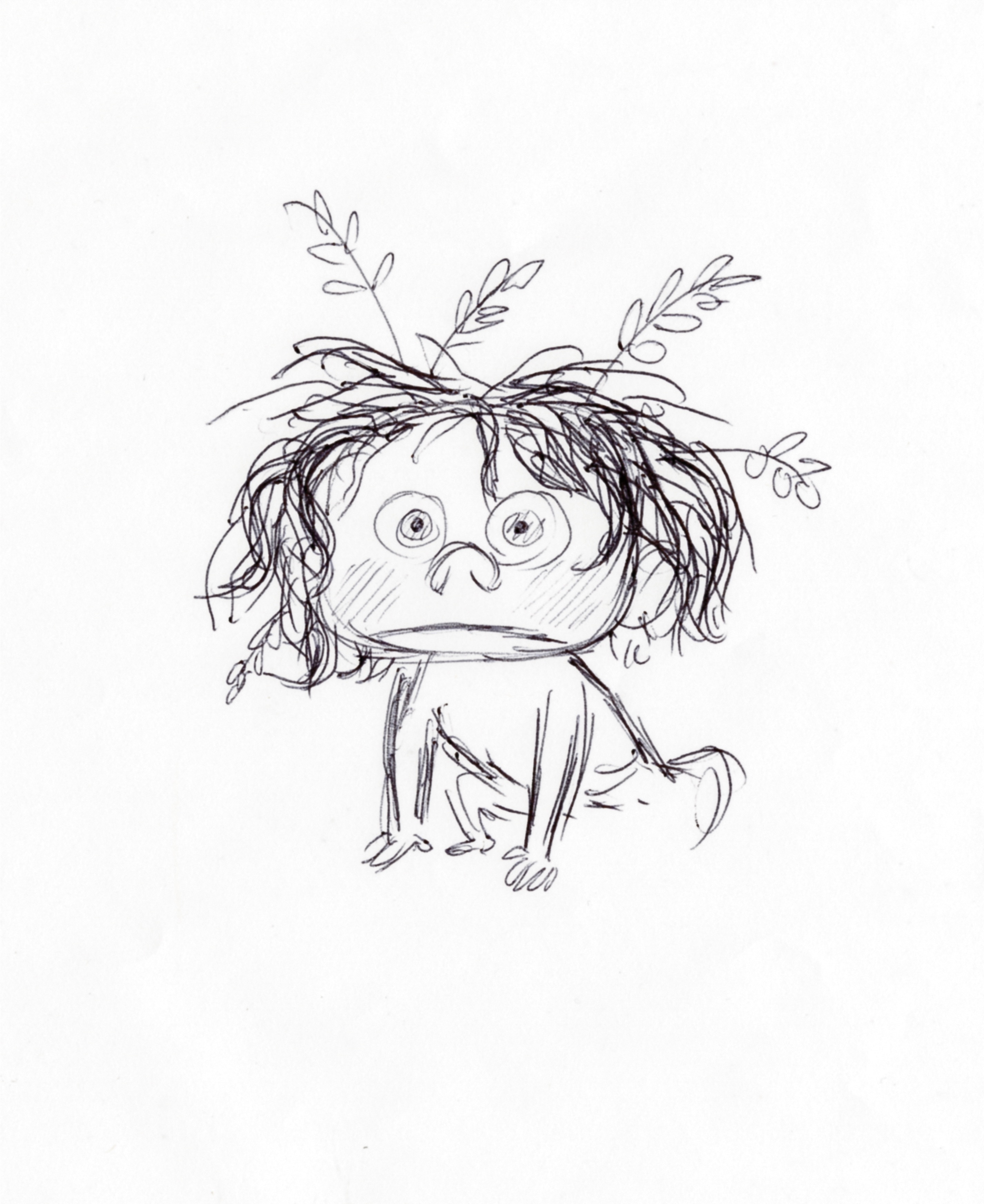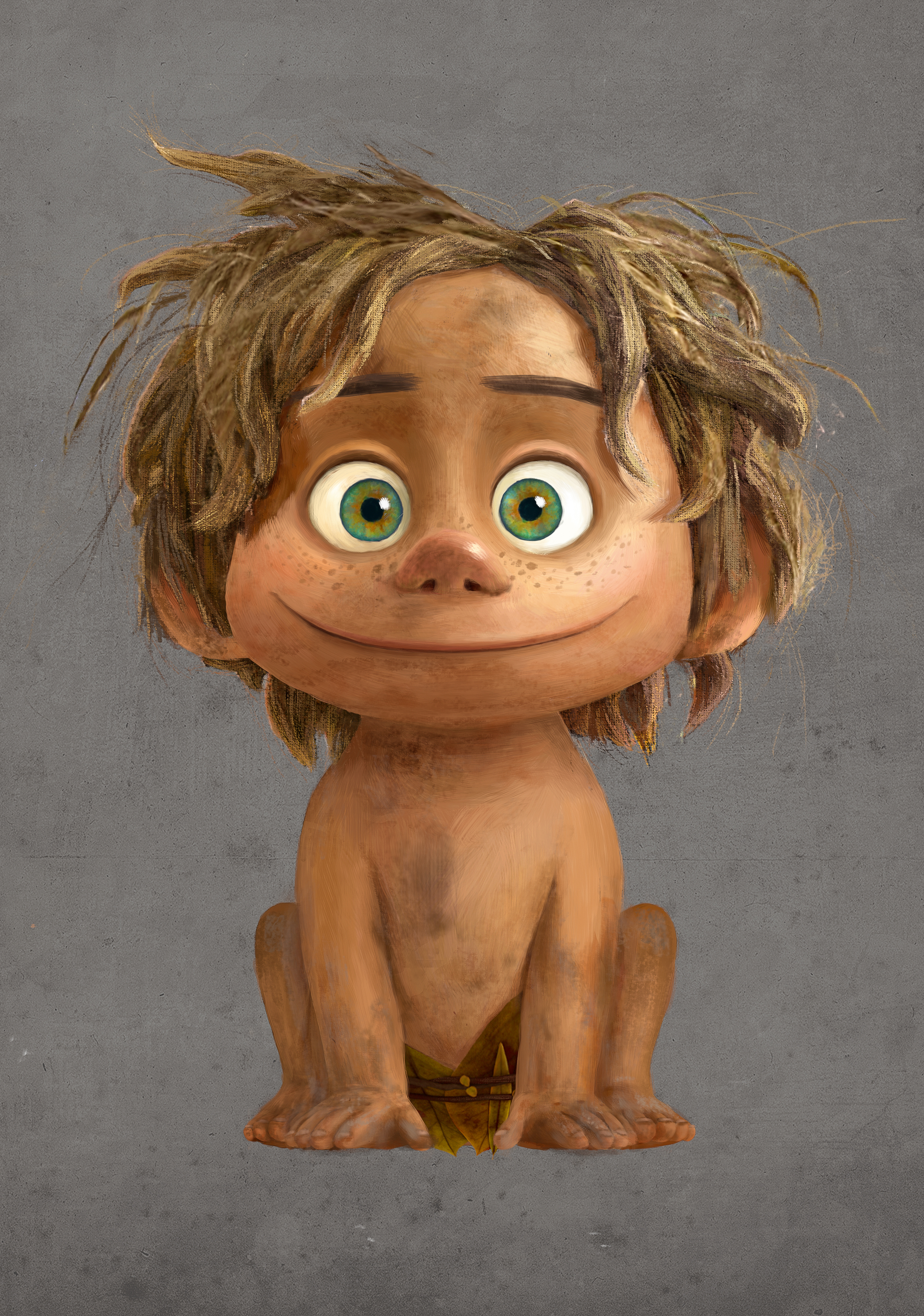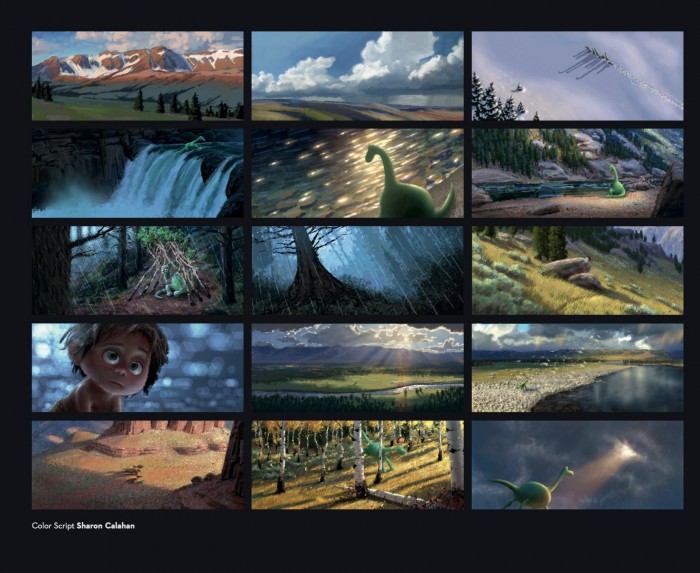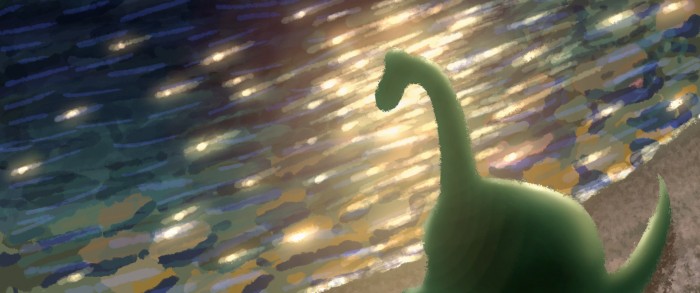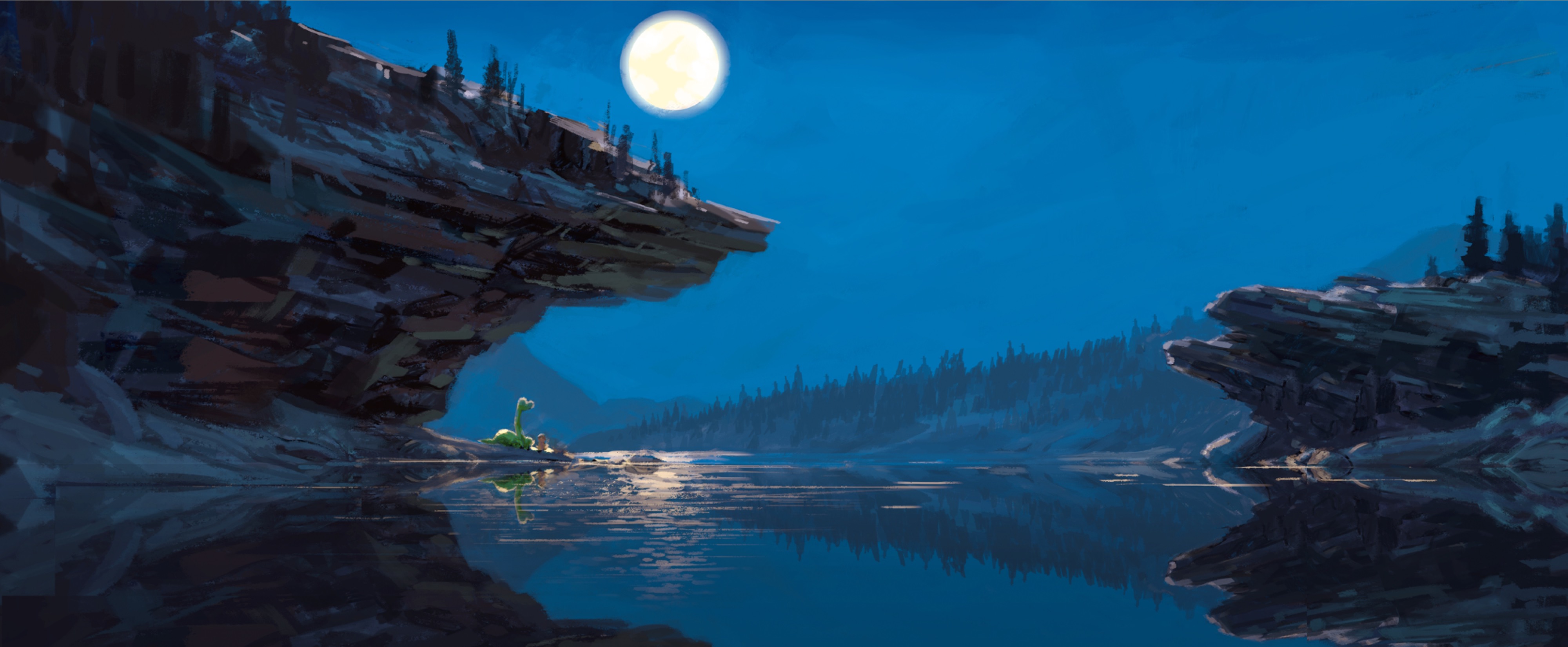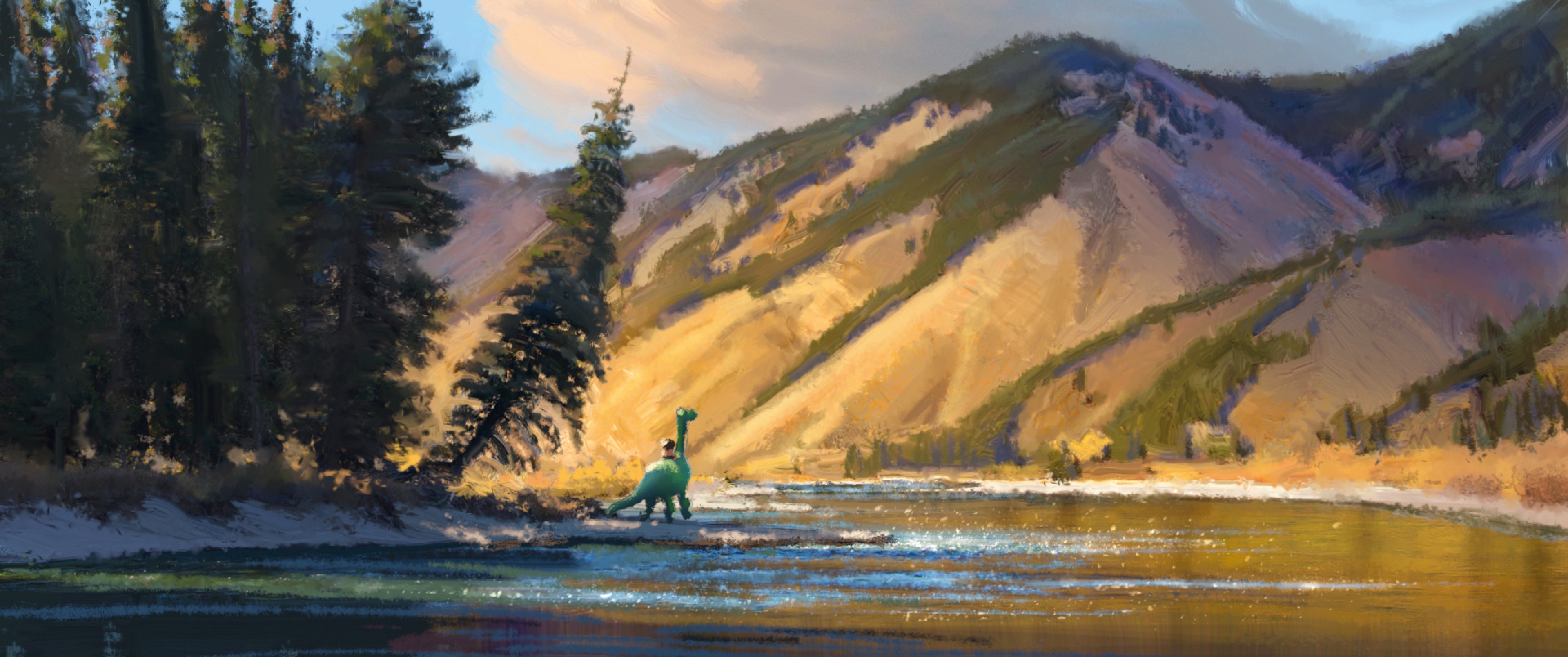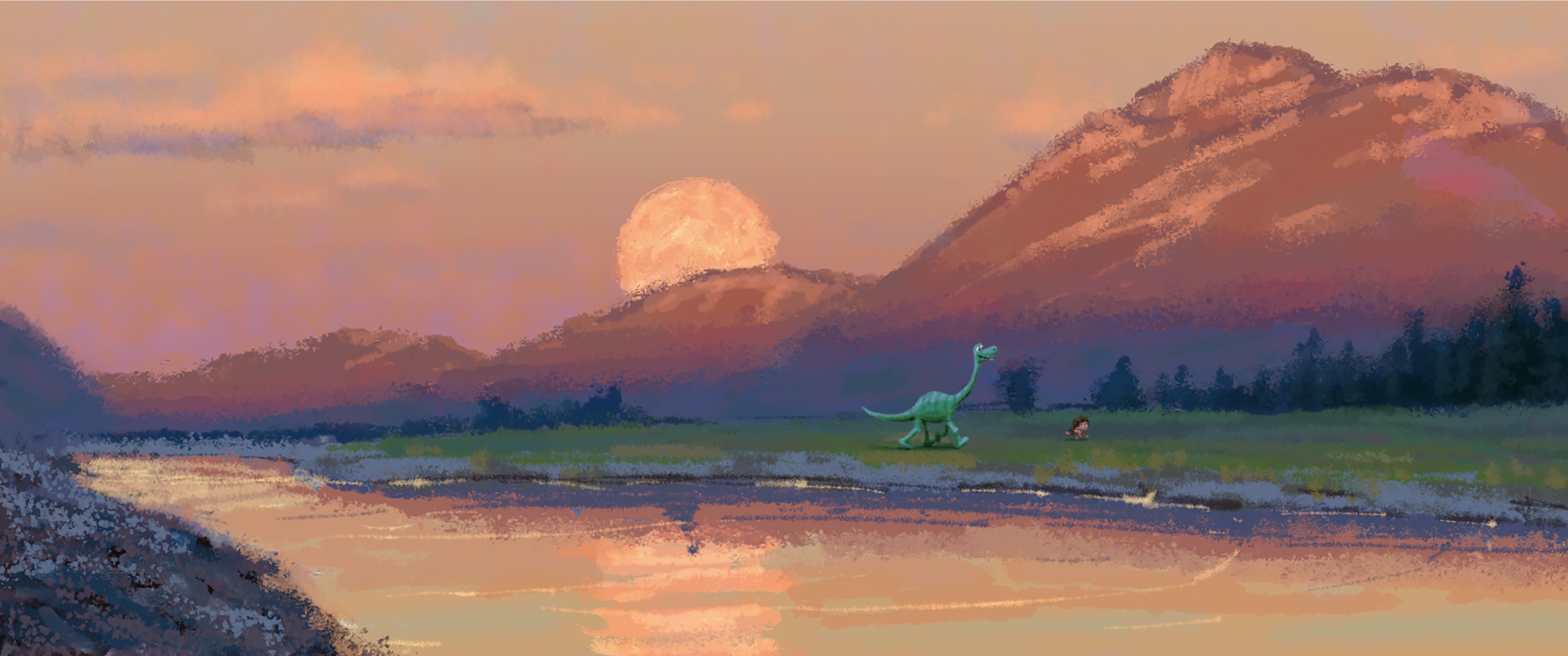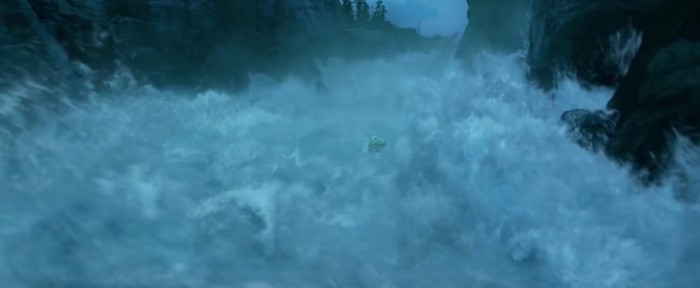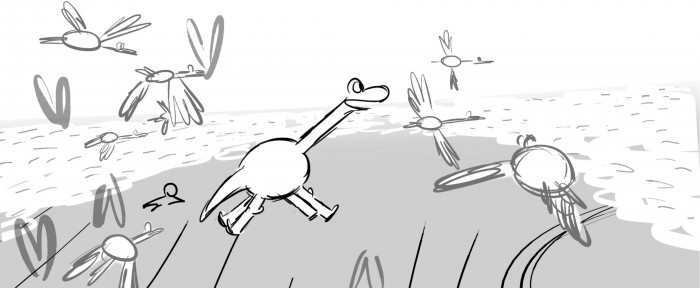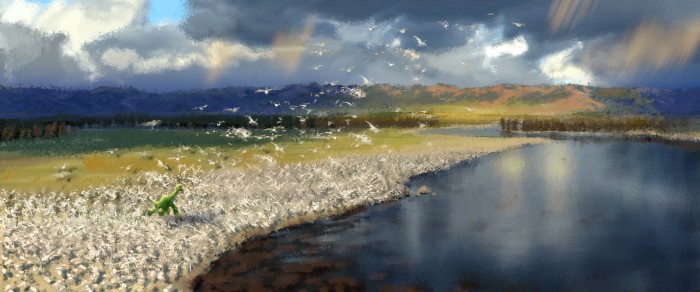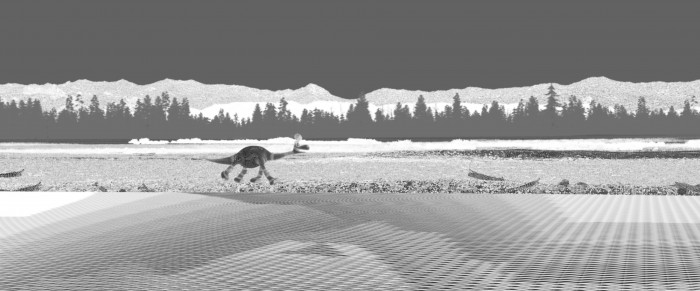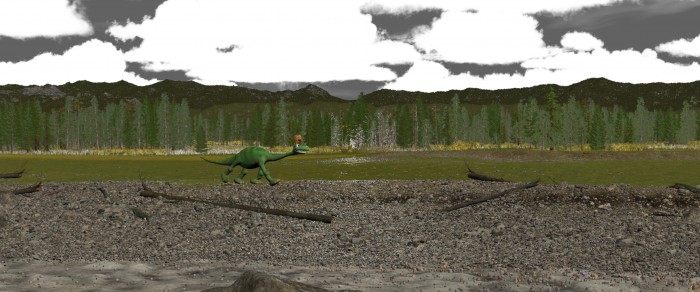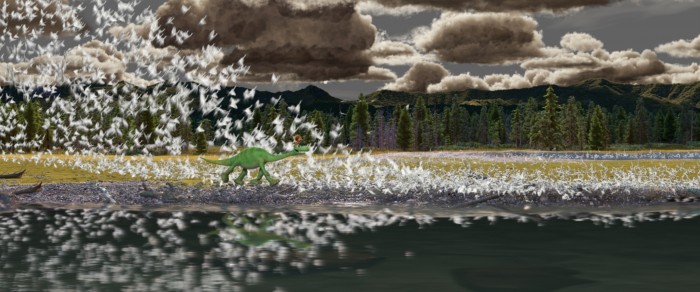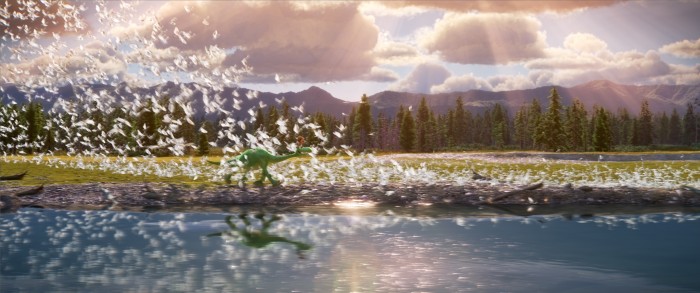How The Making Of 'The Good Dinosaur' Was Different From Other Pixar Movies
In August 2014, we learned that Bob Peterson was removed as director of The Good Dinosaur, and co-director Pete Sohn was appointed the sole director of the project. We've heard about just how much of the film has changed under the new direction, and the word "drastic" isn't at all hyperbolic in this case. Perhaps that's why my visit to Pixar to preview The Good Dinosaur felt very different from my past trips to Emeryville.
It was very clear during every conversation I had, just how little time the studio had to mount a completely new movie. They threw out much of what they had and were tasked with creating a finished film in just 15 months. That may sound like a long time, but Pixar is used to having a lot more time on their films, sometimes five or six years.
And while this information might suggest a dire situation for the studio, it should be noted that Pixar has replaced the director and revamped the story on films as wonderful as Ratatouille. So no cause for alarm here — from what I've seen in the 30 plus minutes of footage that was previewed for me on this trip, we have nothing to worry about.
I'll be completely honest — the cartoony dinosaur designs in the posters and advertising did not excite me. It wasn't until I really got to take in some of the movie that I fully understood the vision of this film, and how the cartoony character designs are used as a wonderful contrast to the almost photo real environments.
But all of that is for nothing if there isn't a good story at the center of it all. And while I can't be sure of that just yet, I can tell you that one of the scenes that was previewed made me cry, as only a Pixar film can.
But for this article, I wanted to focus on how Pixar was forced to change their process in the time restraints of of the development of The Good Dinosaur.
Near Photo-Real Environments Created With USGS Data
You may have noticed that Pixar usually starts with big, wide establishing shots and then cuts into a smaller enclosed environment. But Pete Sohn was insistent that the story needed expansive environments unlike any other Pixar film ever created. The shrunken production timeline gave Pixar less time to design the film's locations, and the extreme number of shots would make it impossible to have matte painters create the atmosphere and environment in the skies and distance, as they had in previous films.
The environments in The Good Dinosaur are breathtaking. There are moments in the 30 minutes of the movie I previewed that look no different from live-action footage. And if it looks real, that might be because they used real data to create the locations in the film.
"Everything you see on screen that's not a special effect, we build and paint in the set department," explained sets supervisor David Munier.
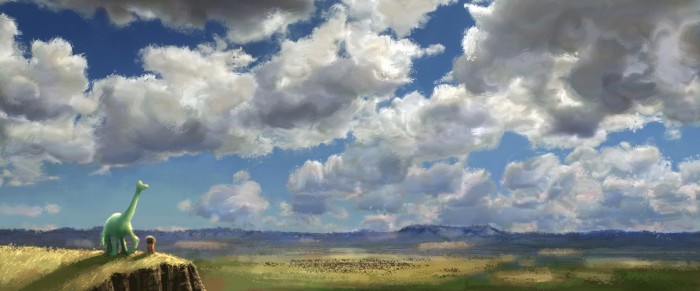
Pixar doesn't want to use the word "photo-real," and instead have coined the term "painterly realism" which means they are "just detailed in a way advanced technology and style decisions allow." Some members of the team playfully refer to the look as "Sharon Calahan Realism," in honor of the director of photography-lighting. Calahan is a passionate landscape painter and has spent many hours painting in the very areas that inspired the film's setting.
Some shots in the movie look out more than 50 miles in the distance. To accomplish this near-impossible task, the set team used actual USGS data of the northwest United States to create the sets in the film.
The United States Geological Survey has satellite photos of all of North America along with typographical data for the height. As a test, Pixar's set team downloaded the information and took a famous Ansel Adams photo and applied the data to where the photographer would have taken the image. The result was miles and miles of 3D geographic environment. It would take time to texture and populate the environment with vegetation, but the result was a lot of bang for very little buck.
They Researched the Land, Not So Much the Dinosaurs
When traveling to Pixar for The Good Dinosaur, I was expecting to hear a lot about the research that went into the prehistoric period and how what they learned about dinosaurs influenced the story and flavor of the film. Surprisingly, there was little mention of history or even the dinosaur species that are at the core of the story.
Instead, we were treated to campfire tales of research trips director Pete Sohn and his team took to Wyoming, in an effort to capture the look and feel of the wild.
Sohn and crew were inspired by the beautiful yet dangerous environment, which is why they came to the decision of give the characters a very cartoony, stylized look in contrast to the almost photo-real environment.
Pete wanted the environment to be another character in the film, especially considering there isn't a lot of dialogue – the landscape needed to help. They were also inspired by a family of ranchers they stayed with on one trip — the family became the basis of the T-Rex characters you see in the film.
During their white-water rafting trip down the Snake River, the GoPro camera being used to capture reference footage was dislodged and lost in the river. Thankfully, their river guide was able to actually "read" the lines of the river and figure out just where it would likely come to a rest down stream. The camera was recovered and the team even has footage of its solo journey.
The Digital Story Room: A New Way to Develop a Story
Story supervisor Kelsey Mann, who also worked on Monsters University, explained to us how the shortened timeline of this production made them rethink how they would develop the story of the film.
As with all of Pixar's movies, The Good Dinosaur was drawn and storyboarded many times, with artists getting notes on how to improve sequences and often times having to rebuild the story over and over again. The goal is to get the story right before they get to the more time-consuming, more expensive, render-intensive part of the process.
Traditionally, story artists will work on their storyboards on Wacom Cintiq tablets in their respective offices. The downside of the equipment is that it isn't portable, and Mann felt something was lost with this separation of the artists.
Mann decided to develop a new way of working that would allow for more collaboration and a better team atmosphere. His idea was to update the "story room" of the old animation studio days into a new digital story room, which they call "the bullpen."
The Good Dinosaur story room is a conference room located on the second level of Steve Jobs building, overlooking the atrium from the east side. The idea was to create a safe environment "where you can and should say anything." They encouraged all the artists to be open and honest about how we experience life as human beings, with the goal to get down to what Mann called "the true feelings."
They had an open-door policy, so some artists could still work in their office if they needed to focus but would still be encouraged to join the group. The digital story room allowed everyone to be on the same page. Sometimes they would put a movie on the screen for inspiration, but often they would put on music because it was less distracting.
For storyboarding, they would assign the artists to tackle certain sequences of the story. A story artist who was better with funnier material would be cast for a more humorous moment, while a story artist who was better with the subtlety of emotion would be cast for more emotional moments.
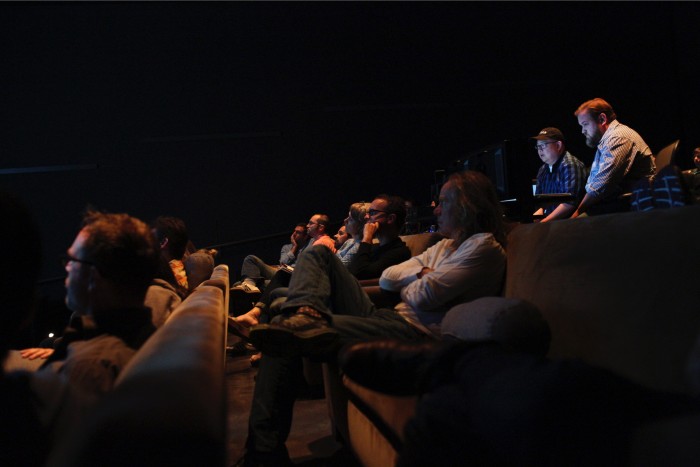
A story artist will create at least 300, sometimes up to 1,000 drawings to pitch a story sequence. Imagine something closer to an animatic than what you might picture with traditional storyboards.
The sequences might have as much as a few frames per second. During the pitch, the story artist will do all the voices, narrate the actions of the sequence and maybe even play sound effects with a physical instrument (or in the case of the demo we saw, a squeaker toy) or play music from a computer. It's more of a performance than a pitch.
Virtual Location Scouting
They even used that data to conduct digital virtual location scouts — Pete Sohn would "visit" the locations using the virtual topographical locations created from the data and chose the locations needed for each sequence of the film. 64,600 square miles of North America were downloaded and adapted to help tell Arlo's story. The river that takes Arlo away from his home was modeled after the Salmon River in Idaho. The desert where Arlo meets the T-rexs was modeled off of Zion National Park.
Once they decided on locations, Pixar artists added in more details like rocks, trees and grass. They kept the scale of the environment, but they chose different types of trees and such to suit the scene. They would also alter the data to fit their story, turning real-life locations into fictional ones.
The Claw Tooth Mountains, a landmark seen right above Arlo's home, were created and added into the U.S. geographic data. Pixar needed the mountains to be iconic and recognizable to audiences .
The art team production-designed all the vegetation in the film, finding what shapes would represent certain kinds of trees. The set dressing team used the library of vegetation to populate each area. The simulation team added wind into the trees, whatever was needed to help tell the story of that particular moment of the film. If it was a turbulent moment in the story, then maybe the trees in the background would be moving angrily.
As for the prehistoric details, Pixar decided to use more modern vegetation versus what we know of prehistoric vegetation. While the story takes place in a universe where dinosaurs weren't killed off by an astroid hitting Earth, it's strongly suggested that the film takes place closer to our stardate which may explain why the planet looks more modern and less prehistoric.
Using 100% Volumetric Clouds to Light Scenes
Clouds in Pixar movies would usually be painted in by matte painters, using layers to create the illusion of animated drifts. But for this film, Pixar wanted to light the entire set and not have to go back and forth with a painter in the background. So they chose to populate the skies of the world with volume clouds.
The set team designed a library of different clouds with a set list of 11 different cloud types. Pixar's artists and technicians also created a rain library, featuring different types of rain that could be mixed and matched and manipulated to create any desired look. The clouds would be combined to form unique looking formations, which were not just scenery in the background of the story.
The lighting team was able to have the volemetric clouds cast shadows on the ground, controlling the location of the sun to light each scene.
Dinosaur Movements Were Modeled Off Elephants
Animators will tell you that one of the hardest things to animate is a quadruped, so the characters in The Good Dinosaur posed a big challenge for animators. We don't know how dinosaurs moved, but scientists have some ideas.
Because there are no living dinosaurs to model movement off of, Pixar traveled to the Oakland Zoo to observe elephants. They picked the elephant because it's roughly Arlo's size. They wanted to capture the heavy nature and locomotion of the animal. Animators returned to Pixar with the video clips they captured on the research trip, which they used for training the animation department on dinosaur movement. The animators would digitally draw on top of the clips to learn the locomotion of the animal.
The lead animators reduced the movements down to four basic ones which would be the core of how Arlo and other dinosaurs moved in the film. At the peak of production there was 85 animators, most of them working on Arlo since he's in almost every frame of the film. To help keep things consistent, they built systems into the character of Arlo to keep him "on model." Basically if Arlo was moved in a way he shouldn't normally be, a visual alarm would be triggered in the animation to alert the animators.
The animation team also initially referenced giraffes for Arlo's neck. However, they found their necks to be too stiff and looked more towards camels for their looser neck movement.
T-Rex Movement Was Based on Humans?
The animators initially studied ostriches and other birds for the T-Rex characters in the films. They went back and looked at The Jungle Book and Jurassic Park for reference, for good and bad. And they came out of it all with a working model of how the T-Rex would move. But director Pete Sohn was not happy with the results. They looked too realistic and not character-like.
Instead, he wanted their movement to look more like the movement of a cowboy on a horse, to better reflect their personalities and jobs as ranchers. When they're running, their lower bodies mimic that of galloping horses, while their upper bodies have the feel of the riding cowboy.
Butch, the tough T-Rex Arlo encounters on his journey, has a fun easter egg. According to supervising animator Mike Venturini, when Butch grins, his big white teeth resemble the actor who provides his voice, Sam Elliott's signature moustache. Filmmakers looked at classic movie cowboys like characters portrayed by Clint Eastwood and Jack Palance to help inspire Butch's physical look and performance.
Spot's Movements Were Not...
For Spot, the human character that is befriended by Arlo and comes along on his journey, the animation team studied a lot of wolves, dogs, critters and raccoons. The character of Spot is more of a dog than a human in the function of the story, so it just made sense to model his movements off of creatures of that kind.
More Than Twice as Many Effects Were Created Than in Any Other Pixar Movie
Over 900 effects shots were created for The Good Dinosaur, twice as many as Pixar has ever done in a feature. And the effects run a very wide range from big to subtle. For those of you who don't know, the effects department is responsible for providing many of the natural phenomena you see onscreen: smoke, fire, fog, water, etc. Motion is important to the effects department to give you a sense of scale, timing and weight. For instance, the way snow mists in the wind off the top of mountain might reflect the mood of the scene.
They use physics simulation software, using different toolsets for different problems. The software solves equations of motion for every frame of an effect, as it understands the physics of how things are supposed to move and behave.
How Spielberg's Duel Influenced The Good Dinosaur
Brave had a couple dozen shots of a river, and it was one location, one small river. The Good Dinosaur has over 200 shots of water in the film, and it's a long river so there is more than 125 shots of the river alone. And to make matters worse, water is by far the hardest thing for the effects department to create.
Everyone knows what water is supposed to look like, so if they get it even a little wrong, everyone will notice. The effects team took a research trip with the crew and went whitewater rafting, capturing video footage to use as reference for a big sequence where Arlo gets carried downriver. Software simulations of a river can be very expensive and time-consuming and take up a lot of render time.
The river needs to parallel the emotional relationship between Arlo and Spot. You will notice that the water has a more angry, foamy whitewater appearance early on, and later after the characters have developed a friendship, the water appears a lot calmer.
To accomplish the task of creating over 200 shots of a running river, the effects team created seven or eight different river pieces that they could combine like LEGO building blocks to fit any scene of the film. When properly combined, no one will notice they are seeing the same sections of river over and over again. Director Pete Sohn referenced Steven Spielberg's Duel, which was filmed using one small section of highway over and over again.
One Water Sequence in The Good Dinosaur Is Larger Than the Data for Cars 2
The Good Dinosaur had over 300 terabytes just for the effects data alone. For comparison, that's ten times more than the effects data for Monsters University. Just the big sequence of Arlo being swept away took up 17 terabytes, or more than the data for the entire production of Cars 2 including all the characters, environments, and effects. Pixar's storage and network had to be significantly upgraded to handle the effects workflow of The Good Dinosaur.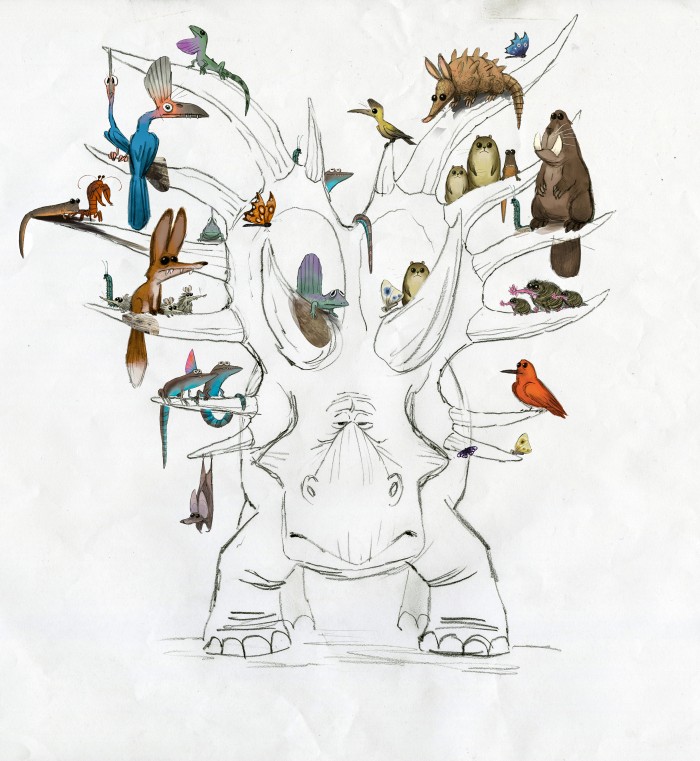
The Evolution of a Shot in a Pixar Movie
Pixar provided us with some progression images to show how one shot evolves from storyboarding, to art, to sets, to layout, to animation and finally to lighting where the shot becomes finalized:
This storyboard was drawn by story artists Rosana Sullivan and Gleb Sanchez-Lobashov, both members of the story team for The Good Dinosaur. Storyboards are used for the purpose of pre-visualizing the film, and to convey a rough sense of how the story unfolds. This storyboard, from a sequence called "Above the Clouds," is one of approximately 154,061 boards drawn for the film, of which 87,748 were delivered to the editorial team. The storyboarding process, in the form it is known today, was developed at Walt Disney Studios during the early 1930s.
Once the storyline for a sequence is completed, concept art is created by the production designer and art department to determine the look and feel of the film. This concept art piece was drawn by Sharon Calahan, director of photography – lighting and visual designer for The Good Dinosaur. It showcases the exploration of color and light, and the design of new characters and environments.
Using the concept art for reference, the basic environments needed for a shot are translated into the computer by the sets department during what's called the modeling process. The sets team for The Good Dinosaur used data from the U.S. Geological Survey to inform much of their work and help to create 360º sets, something no other Pixar film used before. Once the set for a scene is built, it then needs to be "dressed," which is where the shading team comes in. Technical artists use a combination of painting, programming, and photo references to apply textures, colors, patterns, and other material properties to the sets, giving them complexity and appeal. This is a wireframe image of one of the landscape environments, showing the underlying modeling.
Once the storyline for a sequence is completed, the scene is created in the computer. This frame shows the phase known as layout, in which a virtual camera is placed into a shot. The layout team on The Good Dinosaur had the advantage of working with 360º sets in the film, allowing for more options to place the virtual camera. Once the camera has been placed, the characters and set are then "staged" or placed into positions that work visually within the chosen camera angle. The look of the set is simplified during this phase, but is then seen fully built in the next stage of production. Layout precedes character animation.
After the layout team has completed their work, the characters are animated and brought to life by the animation department. Animators create the personality and "acting" of the characters. Any secondary motion such as hair, fur, or feathers is added by the simulation department, and who make them move naturally with a character's movement.
The lighting department is responsible for integrating all of the elements – characters, sets, cloth, hair, and effects – into a final image. The lighting process involves placing virtual light sources into the scene to illuminate the characters and the set. Technical artists set up the lighting to draw the audience's eye to story points and to create the correct mood in a scene. The images are then rendered at high resolution. For every second of the film, there are 24 lit frames, each including over 2 million pixels.

